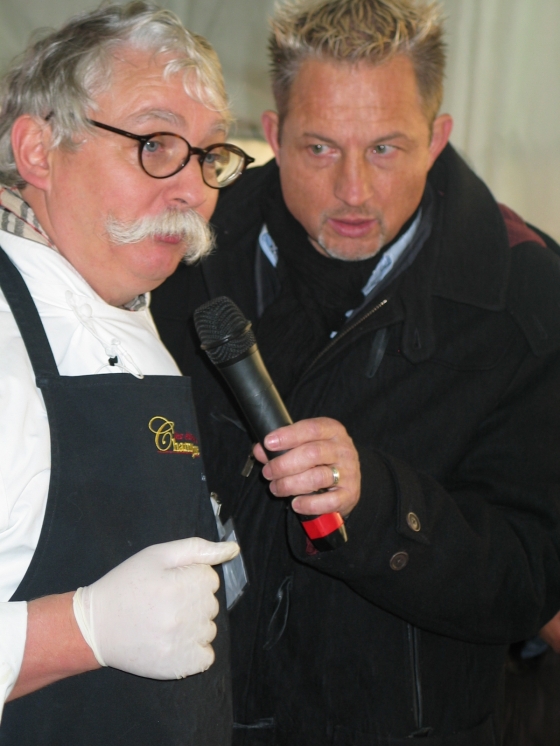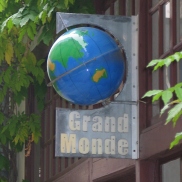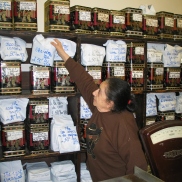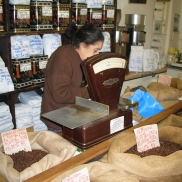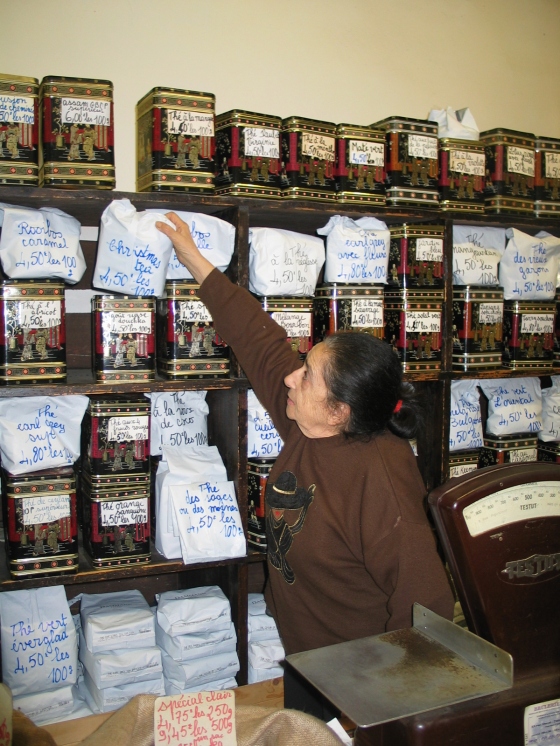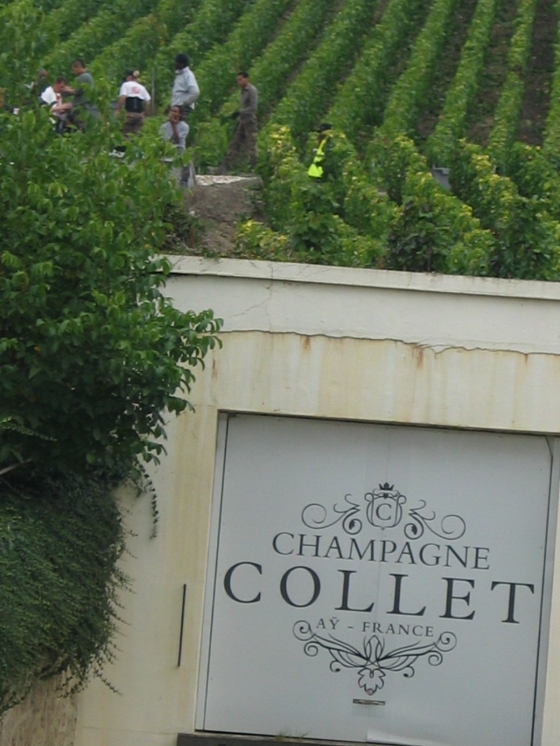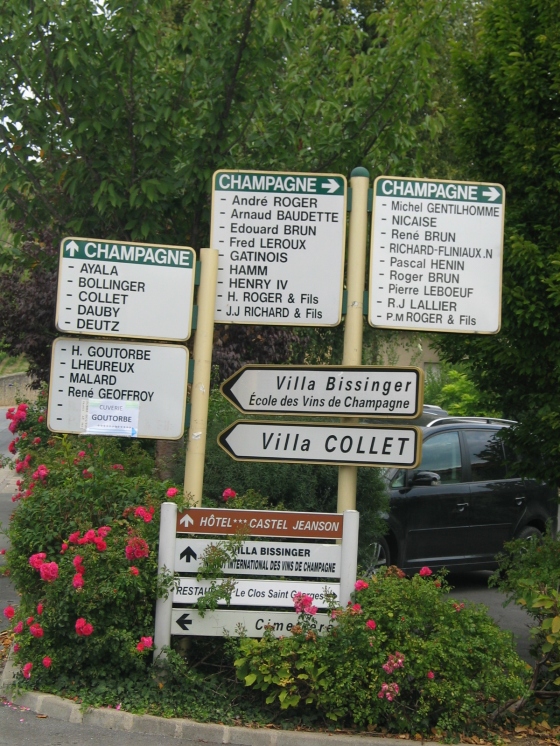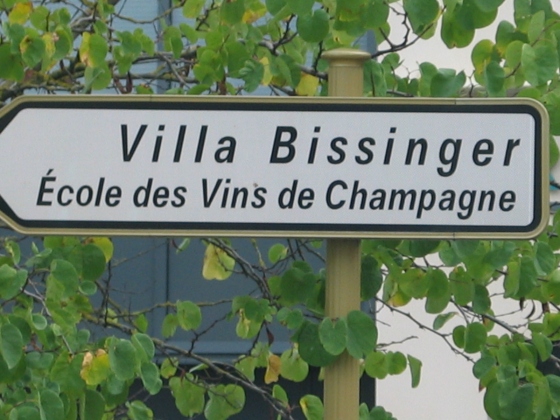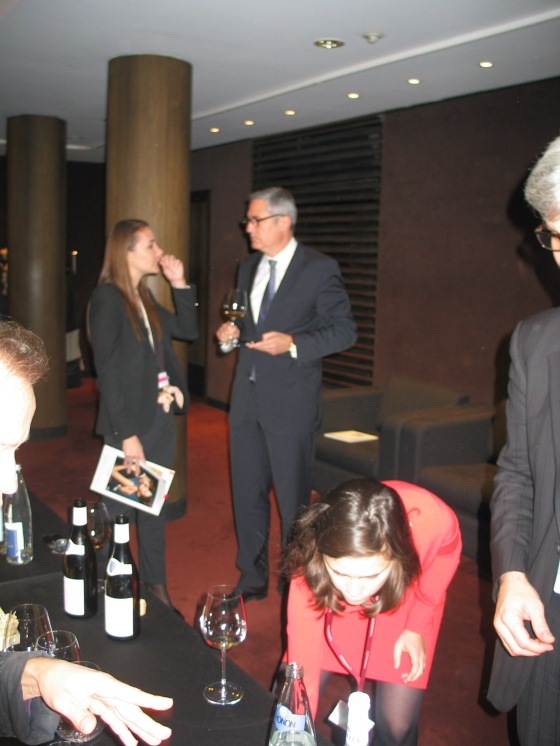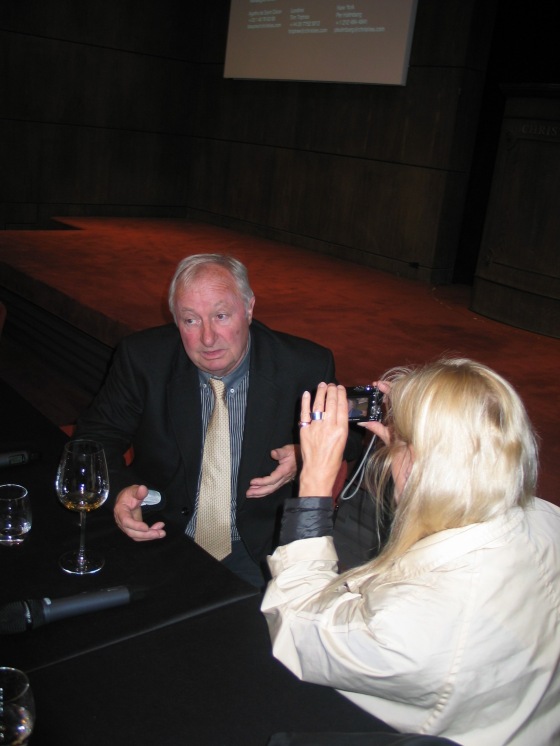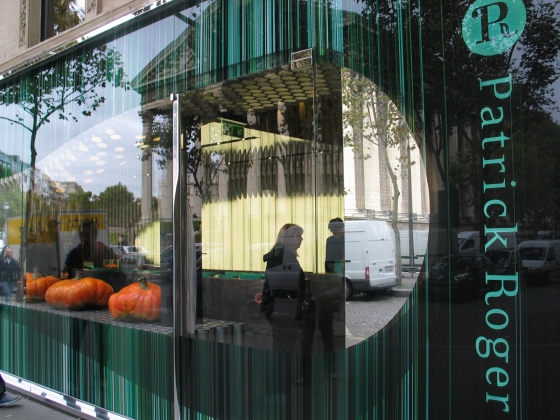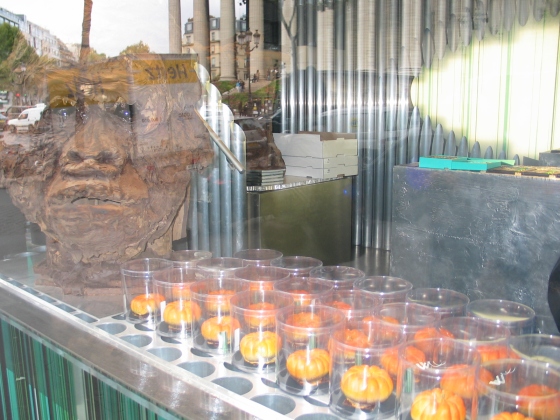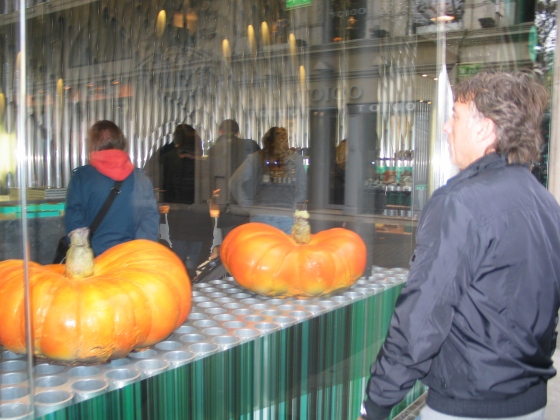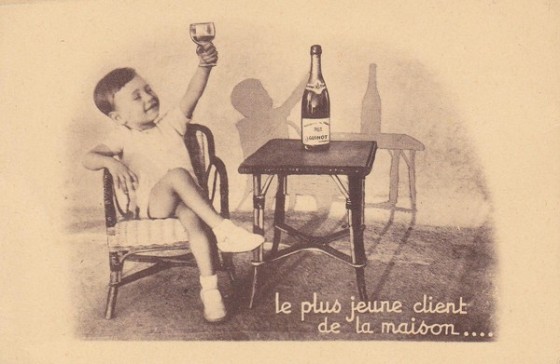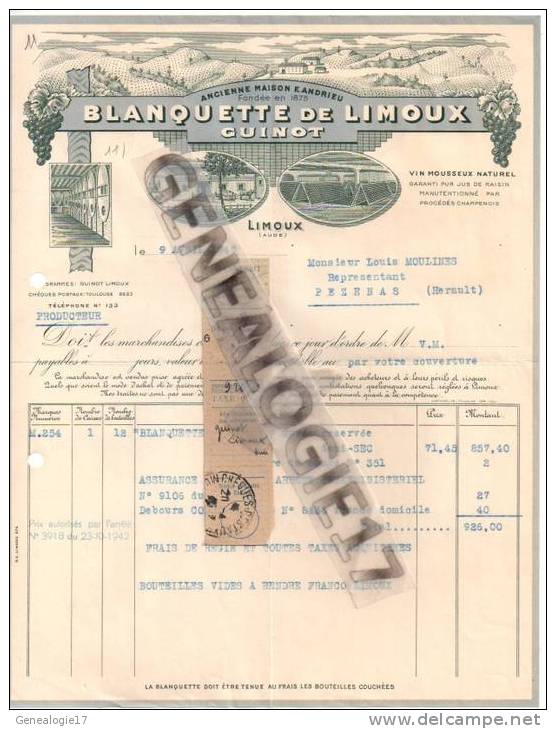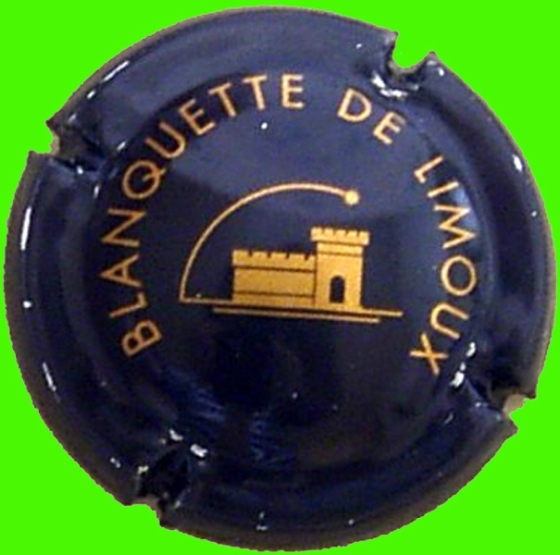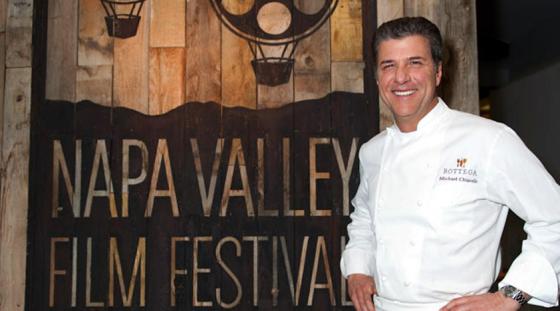Friday, December 27, 2013
KRUG: The Art of Blending Pleasure
Can't think of a better Christmas present this year than a cellar tour
and tasting at Krug.
Isn't it too true that oftentimes « the best » is shrouded in mystery
? People tell you something is the best but unless you try it for
yourself and unless you have the same tastes as the tastemakers, how
do you ever really know if « the best » is the best in your estimation
?
See Full Photo SlideShow On Local Food And Wine
http://localfoodandwine.wordpress.com/2013/12/22/krug-the-art-of-blending-pleasure/
Krug Cellars Reims, photo c. Paige Donner
« Taste is subjective, » says Julie Murez, Krug's Hospitality Manager.
For a House that has a global reputation of being the best champagne,
at least, say, Top Ten, this was a refreshingly humble statement to
hear from someone representing a champagne house.
For my upcoming report for World Radio Paris – see my program World of
Wine http://www.worldradioparis.com/ – I will dive more into the
details of the house and its philosophy, but here I'd like to remain
within the comfort of first impressions. And these first impressions
were very comforting.
Pleasure. Their emphasis on the pleasure of the experience of drinking
a glass of Krug champagne feels so right. Nevermind why it tastes so
good and goes down so easily, let's just focus on how darned good it
makes your senses tingle and feel. That is, receive a glass of Krug
with your emotions, less with your intellect, and you will grasp
better its goodness.
Playfulness. I had not expected this underlying tone of playfulness
within such a dignified house, one of the most established in Reims.
But there it was : Playfulness. From hearing how the Tasting Committee
tastes each wine from each unique plot (nearly 250) as well as the 150
reserve wines kept in their cellars and how no hard and fast blending
rules are obeyed – rather a dance with nature is what is achieved.
What nature has given that year is what is respected, recognized and
then « mis en valeur » that fantastic French phrase that means cast in
the best possible of lights.
History. In many contexts the word history can feel stuffy and evokes
images and feelings of austere, untouchable, distant, encased in
something that makes it removed from life today. But there at Krug,
the new President, « Maggie » as this Argentinian woman is apparently
known to all the staff, mined the nuggets of the house's history when
she arrived in 2009. With these nuggets, they assembled a rich human
history of just how Joseph Krug, who once worked for Jacquesson
Champagnes, in its day the biggest champagne producer in the region,
married his boss's English wife's sister and then, for his love of and
loyalty to quality before all else, felt impelled to start his own
champagne house. And this is how Krug was born.
"Our unconventional approach, the way we make choices that are not the
easiest ones and go beyond the rules when needed illustrate our vision
– a constant since the very foundation of the House of Krug." -
Olivier Krug, Director of Krug, Sixth Generation
See Full Photo SlideShow On Local Food And Wine
http://localfoodandwine.wordpress.com/2013/12/22/krug-the-art-of-blending-pleasure/
There were many more surprises, all good, all enjoyable, that awaited
me that wintry morning on my Krug Cellar visit…That the cuvées,
regardless of their price, are not seen as better than the other. «
There's no hierarchy at Krug, » repeated Julie several times ; Their
oak barrels that they keep in a pyramid formation ; And their two wine
libraries, one of bottles that date back to 1880 and the other that
house tenderly cultivated grapes that have been gently pressed into
juice and then fermented into wines that will be the blends of their
champagne in the years and decades to come.
Enjoy the photos. And yes, be good to yourself, open up and enjoy a
bottle of Krug with yourself and someone who appreciates you a whole
lot. And then decide for yourself if a champagne that the world deems
« the best » is really the best for you.
And Good Heavens, don't forget that before all else there's a huge
dose of pleasure to be had in each bottle of Krug.
KrugLovers.com
FOLLOW US ON TUMBLR * FOLLOW US ON TWITTER * LIKE US ON FACEBOOK
♥Chérie Du Vin
http://cherieduvin.tumblr.com
Monday, December 16, 2013
Dallet's Tropical Fruit Macaron
by Paige Donner
All photos and media c. Paige Donner, Local Food And Wine.
Vincent Dallet is one of the not-to-miss patisseries and chocolatiers in the Champagne region. With shops in both Épernay and Reims his chocolate confections, his melt-in-your-mouth chocolate almond croissants, and, of course, his patisserie perfect cakes and macarons all sell out every Sunday morning and each day of the week he's open as well.
See Full Slideshow on Local Food And Wine

His wife works the cash register and is always kind and welcoming. Mr. Dallet's gift to the region, and to gastronomes everywhere with a sweet tooth who happen to find out about his creations, is the « Maca'Bulle » which is a macaron made with an ivory champagne flavored ganache center sunk into a flute of champagne, a sort of macaron-champagne float.
See Full Slideshow on Local Food And Wine
In these photos you'll see him demonstrating how to make a tropical fruit flavored macaron with a pineapple, mango, passion-fruit coulis. Two guiding priciples he says are to choose fruit at its perfectly ripe perfection – for pineapples this means using your nose and picking the one that smells like honey. And the other secret to perfect macarons is using the right finely ground almonds ; He sources his from a region in Spain that grows the best almonds in the world, he swears by it.
In Reims his shop is called Chocolaterie des Sacres and can be found at 47, cours Jean-Baptiste Langlet. Chocolaterie-des-Sacres.com.
@LocalFoodWine
Follow us On Tumblr * Follow Us On Twitter * Like Us On Facebook
Wednesday, December 11, 2013
Brulerie Daval - Paris's Best Coffee Roasters
by Paige Donner
Brulerie Daval
It's taken years but I've finally found the hands down, absolute best coffee shop in Paris. It's the Brulerie Daval, just off the Bastille in the idyllically pleasant and peaceful Passage Damoye. It translates to Daval Coffee Roasters.
When Madame's husband opened their shop here in 1947 the Passage was still home mainly to the vestiges of furniture craftsman who worked in the furniture shops that the neighborhood around the Bastille had come to be famous for. Real craftsman who turned out exceptional quality furniture, the kind that lasts generations.
She explained to me that all the flats in the buildings of the Passage were therefore cold water, workmen's flats with shared lavatories on the floor corridors. That was before Americans moved in a few years ago, starting in the early 2000s and with their swarm, apparently mostly young internet tycoons and techies from SF, they renovated the buildings and the flats and turned most of them into posh condos. Still, many of the buildings do not have elevators. Madame's is one of them.
I've often thought that Paris would not be the easiest of cities to grow old in. Any big city really. Places like Paris and Manhattan and San Francisco where everyone is rushing to get somewhere, literally and figuratively, raising young families, dealing with bills, and stress and jobs and carrying heavy bags of groceries up stairwells and the daily commutes on and off of buses and subways and trams and commuter trains.
Holiday seasons drive this point home. Wintry and lonely sometimes I observe the elderly of Paris and wonder where they find any comfort, if they do at all ? France is probably a bit better than, say, Manhattan, as the sense of family is still so strong here in this country. Family ties are solid. But you can never use that as a blanket statement. Because then we risk desensitizing ourselves to the exceptions, and there are always exceptions.
Chatting with Madame about her shop and the history of the quarter, while buying some Christmas Blend Tea from one of the hundreds of canisters of teas that line her shelves, just behind the stacks and stacks (oh, I'd say at least about 50) of whole roasted coffee beans in burlap sacks, I asked how often her children are able to help out in the shop. She told me she had none. Given the era she's from, already married in 1947 and her sort of Southern dark looks, it would have been altogether too easy to assume, indeed I did assume, that she would have several progeny. And even progeny of those progeny. But this widow has not one.
That's when she got to telling me about her trip a few years back to California – to Hollywood, to Beverly Hills and then even over to Las Vegas and the Grand Canyon. We mutually agreed that the Eiffel Tower in Vegas is nothing in comparison to the one here in Paris. She told me she loved driving past all the stars' homes in her tour bus with the 50 or so other elderly she'd taken the trip with. Of course I didn't ask her age but jusging from appearances she had to have been past 80 already when she did that trip.
This brief conversation, during which we each chattered away, a sure hint of two kindred city souls, has kept turning in my mind. And it's gotten me to resolve to be particularly kind and generous and thoughtful to the elderly this holiday season whose paths I cross. Lord knows the lives they've had and the struggles they face daily. Madame, for example, hurt her hip a couple years ago so now rather than going up the stairs to her kitchen for lunch each day – the stairs being too much to navigate more than once in a day – she relies on someone to bring her her lunch which she eats in the shop. That's a long day for anybody, 10 – 7 :30. And no comfy chairs to recline on, just a little old wooden table and a couple of rickety stools.
So this is my wish this Holiday Season (Santa are you listening ?) that all elderly people living alone and without family in big cities this Christmas and Hannukah and Kwanzaa, feel the warmth, joy and love of people's, young and old's, appreciation for who they are and the contribution they've made to our world during their years so far spent here on this Earth.
Peace Joy Love and Blessings to All. And don't forget to pick up your Christmas Blend coffee and tea at Brulerie Daval in Passage Damoye, Metro Bastille. In fact, pick up two or three packs and give them as gifts ! People will surely appreciate you for it.
12 rue Daval (Passage Damoye) 75011 Paris + 33 (0) 1 48 05 29 46
Follow us On Tumblr * Follow Us On Twitter * Like Us On Facebook
Friday, November 29, 2013
Champagne Travel At Harvest Time
by Paige Donner
All photos copyright Paige Donner 2013 All Rights Reserved
Paige is the host of World of Wine radio program on WorldRadioParis.
Planning a trip through Champagne during harvest time might at first feel like mission impossible, but if you use a few basic principles by which to plan your itinerary it can be more gratifying than imagined being at the center of all the harvest action. Certainly it's guaranteed to be visually and sensorially rewarding.
First thing to do is check to see when floraison, or flowering of the buds, were for the year. That information is easy to come by in any of the wine journals or online. From that reference point, count about 100 days out and these are your dates for harvest time, give or take a couple of days. So with a solid three months in advance to plan your exact days of arrival and departure to coincide with the actual 10 days to 2 weeks of harvest, plenty of options will still be available for you when it comes to booking hotels and harvest time excursions.
This year's Champagne harvest had a relatively late flowering, in parts it was the end of June, in others it was the beginning of July. Which putvendanges this year into the first two weeks of October. A remarkable contrast with, say, the harvest of 2011 one of the earliest Champagne harvests in recorded history. That year put harvest time, a date of official decree by the CIVC, Comité Interprofessionel du vin de Champagne, late August /early September.
In the strictly managed appellation of Champagne, the grapegrowers do not have the right to harvest when they will. "We are obliged to wait for the dates given to us by the official CIVC decree," explains Anouk Westeel, Champagne Bollinger's communications person. With 164 hectares owned by this venerable house, they wait with bated breath every harvest season for the CIVC announcement. Hence, the diverse region sees a staggered harvest with some areas beginning sooner than others.
"All the vineyards you see spread out before you, they're a patchwork of parcels owned by different houses; Not all of this belongs to Bollinger," further explains Westeel, looking out from atop her preferred vantage point, the pinnacle of the very select Côte des Enfants, a steeply perched plot of Pinot Noir just up and behind the village of Aÿ that is used for their prestige cuvées. "Other of our vineyards are in the Côte des Blancs, for example, which already started harvesting a few days ago" she points out.
With a bit of astute planning, then, a harvest time trip through Champagne can be timed to be at the center of the action for the duration.The key to getting the richest experiences out of harvest season in Champagne is to skirt the bigger cities of Reims and Épernay and hug the smaller towns and villages such as Avize, Aÿ, Hautvillers and Rilly-la-Montagne. To do this, your own transportation is essential.
From Paris there's a fast train to Reims (45 minutes) or a slow train to Épernay (1hour 15 minutes). Either are good starting off points and both cities offer car rental options. You can also hire a car and driver or take taxis to various destinations, options you can tailor to your budget and spirit for adventure.
If you hire your own rental car, the Route Touristique du Champagne offers marked roads through some of the prettiest of the Champagne countryside, such as the ambling hills covered with Pinot Noir vineyards extending between Reims and Épernay, the Montagne de Reims region; Another area, the famous Côte des Blancs, revered for its much-sought-after Chardonnay grapes, extends just south of Épernay and its relatively flat roads and expansive terrain through hectares upon hectares of vineyards are also marked by the Route Touristique du Champagne.
Montagne de Reims
In the Montagne de Reims, Rilly-la-Montagne offers a choice of restaurants from the Michelin-starred Le Grand Cerf to local favorites such as Le Mont Joly which serves big, thick steaks on cutting boards and at reasonable prices. The prestigious L'Assiette Champenoise (two Michelin stars) is in neighboring Tinquieux - reservations imperative - and Rilly-la-Montagne even has its own Châteaux et Hotels luxury accommodations, the Château de Rilly (lechateauderilly.com). This little enclave butts right up against theParc Naturel Régional de la Montagne de Reims, a designated national park reserve. In the early Autumn the Château in Rilly offers weekly jazzsoirées, well-attended by locals.
The great advantage to travel in Champagne during harvest time is not just the spectacular visual backdrop of ripe bunches of grapes hanging from exquisitely tended vineyards that surround quaint little historical French villages, but also the wave of high-energy and activity that is evident everywhere you look when you are in the smaller villages. Even if you are not a Champenois, it's unavoidable not to get caught up in the activity, the high spirits, the frenetic enthusiasm that is vendanges.
Aÿ
A Champagne village that can offer these rich experiences is Aÿ, home to Bollinger Champagne and one of the original historical Pinot Noir growing villages of Champagne. Wine enthusiasts will particularly appreciate Aÿ with its champagne houses, such as Ayala, Deutz and Collet, seemingly on every corner, punctuated only by the requisite boulangeries, crêperies and pharmacies.
One of the loveliest and least known hotels of the region is to be found here in Aÿ. Hotel Castel Jeanson (casteljeanson.fr) is the lovingly restored work of Madame and Monsieur Goutorbe whose champagne house is just a few doors down from the hotel. Deceptively simple when seen from its exterior, the hotel offers a large enclosed courtyard graced with stained glass windows on the buildings that surround the spacious courtyard which house its 17 rooms and indoor swimming pool.
When I casually commented to Madame Goutorbe that one would never expect such exquisite luxury from her modest website, her response was that she prefers not to boast about her hotel's charms, either in picture or in word, "I'd rather that my guests be delightfully surprised when they discover it for themselves," she confided. I told her that in English we have a phrase for this: "Underpromise and overdeliver."
For the Goutorbes, who are originally nursery managers and vine cultivators and now vineyard owners themselves, the 5 year restoration process for the dilapidated and abandoned building that their gorgeous hotel once was, was a much bigger labor of love than they had ever anticipated. And it shows. Busy seasons are May, June and September, October.
Of particular interest to the wine geek will be the discovery of the Villa Bissinger, the Institut International des Vins de Champagne. With a name like that it's easy to imagine that this is a year-round school for serious sommeliers studying for their Master of Wine certification. In fact, it is a facility, unique of its kind in Champagne, where champagnes in all their diversity and all their terroirs are presented, tasted, explained and discussed.
It welcomes groups of, "A minimum of 6-8 people, and up to 50," says Villa Director Etienne Monet. The modern classroom interiors and theater-like seating are in sharp contrast to the 19th c. mansion in which it is housed. Groups traveling to the region can enjoy participating in a morning or afternoon or even full day of "courses" about champagne at Villa Bissinger and you needn't be professional or in the trade to qualify, but advance booking is required (villabissinger.com).
Another excursion Aÿ offers is a guided pedestrian trail that leads you past historical and cultural landmarks in the village. One thing you'll find about the tourist offices in the region is that when you know what to ask for, they will provide the information. It all hangs on knowing what to ask for. So if you ask for Les Musardises Agéennes, you will be given a brochure that marks a trail to follow through the village where plaques and signposts mark your way. The starting point is at Villa Bissinger. From there the footpath follows the small streets up along the vineyards which are just behind the village and eventually down past the former ancestral home of Jacques and Lily Bollinger at 16 rue Jules Lobet. The whole walking excursion lasts no more than an hour, not counting bakery stops and café pauses along the way.
Hautvillers
Just a few kilometers past Aÿ is the celebrated and touristy Hautvillers. Famous as the village of Dom Perignon, the 17th c; monk and "inventor" of champagne, this charming little hilltop village gets its fair share of tour buses. But this hasn't diminished its charm and the church, L'Eglise Abbatiale d'Hautvillers, is a breathtaking gem which houses the grave of Dom Pierre Perignon marked by an inscripted stone. The Abbey where the monk lived is just behind but is not open to the public, only to guests of the private corporation which owns it.
A local favorite hang in Hautvillers is Le 36 which offers a solid selection of grower champagnes by the flute with small-plate snacks to accompany. (Le 36 is not to be confused with Épernay's Le 26, hands down theCapitale du Champagne's friendliest place to order pizza and a bottle of champagne while you kick back and watch the rugby match on the big-screen TV with local vineyard managers and workers).
Just past Hautvillers is Fleury-la-Riviere, what many say is one of the prettiest little villages in Champagne. La Cave Aux Coquillages is the must-see here. It is a cellar-museum housing fossilized seashells from Champagne's Kimmeridgean soils. Champagne connoisseurs will appreciate this as it's these seashells and the ancient seabed that the region of Champagne once was, that lends itself to the particular evolution and finesse of its chalky soils and elegant terroir.
The Côte des Blancs
Switching directions now and heading into Chardonnay territory still requires a vehicle. The Côte des Blancs boasts the most expensive grapes in Champagne. Its Chardonnay vineyards yield the grapes that give the most celebrated champagnes their elegance and finesse, say the experts. The majority of champagnes are a blend of the three AOC approved grape varieties: Chardonnay, Pinot Noir, Pinot Meunier. The exception to this are the Blanc de Blancs, blended completely from Chardonnay grapes and the Blanc de Noirs, blended from either or both of the red varietals.
Among the many, many excellent producers to be found in the Côte des Blancs, in the celebrated villages of Oger, Le Mesnil-sur-Oger, and Vertus to name several, few enjoy the cult status of Anselme Selosse and his Selosse champagnes. Champagne connoisseurs travel to the region just to find some of this sought-after champagne which sells out in Japanese, English and Belgian markets in record time after its release.
Even if you're not on a mission to buy rare champagnes, you can still enjoy a bit of this rarefied air by stopping in at the hotel and restaurant opened by Corinne and Anselme Selosse a few seasons ago. The Hôtel Les Avisésis in Avize, one of the bigger little villages in the Côte des Blancs, home to the viticultural trade school of the region and also to the champagne house Selosse. The refined luxury of the hotel is the fruit of a meticulous restoration process of a building dating to the 1820's that "always had its history steeped in wine production." It's best to call to make reservations for one of the ten rooms as you may send 3 or even 4 emails to the contact address on the website before getting a response, or not (selosse-lesavises.com).
Other than this emphasis on the need for your own transportation, things don't have to be difficult when touring the charming Champagne countryside. Hautvillers and the Côte des Blancs require a vehicle. But if you're without one, Rilly-la-Montagne and Aÿ can be accessed by the little commuter train that runs between Reims and Épernay every few hours from morning until early evening and makes stops in both villages. Roundtrip ticket fare is under 20 euros.
#LocalFoodAndWine
@LocalFoodWine
Sunday, November 10, 2013
Burgundy Preview Harvest 2013
(translated from French)
Roland Masse : « For both reds and the whites, the balance between sugar/acid is excellent. There's a relative consistency among the whites, with good maturity and an aromatic freshness thanks to the natural acid. The reds are less consistent, and some suffered from the grail storm in July. We have, nonetheless, great hope for the quality of our cuvees from Côte de Nuits, the Colline de Corton and also Monthélie, all of which are exhibiting a marked potential for aging. »
- Press Conference, Hospices de Beaune, Christie's Auction House, Paris Oct. 29th 2013
Burgundy Wines 2013 – In The Eyes of Roland Masse, Director of the Hospices de Beaune Vineyards and Cellars
Burgundy's 2013 pinot noirs will have the distinction of a rare wine. The Autumn-like weather we had in the Spring and the grail we saw in July served to ravage many of the vineyards in the Côte de Beaune.
The Côte de Nuit and the Colline de Corton escaped much of this climactic perturbation and will offer us their elegant ruby gems this year as is customary for Bourgogne Grand Crus even in difficult years.
The late harvest, started at the beginning of October, will give us reds that are both tannic and « tonic ». In general, 2013 is a year that varied significantly throughout Burgundy, weather-wise and this will be evidenced in the respective harvests from each of the Climats.
For the whites, the harvest was still a light one (30hl/ha) even though these vineyards were less affected by the capriciousness of the weather.
The one constant for the 2013 whites is their freshness, a taste profile that is associated with a solid maturity for Chardonnays.
In sum : 2013 is a rare and precious vintage.
Burgundy Wines 2013
As Seen By Anthony Hanson, Master of Wine, Senior Consultant to Christie's
2013 is as promising a vintage for the Burgundy reds as for the whites.
The growing season for the vines this year played out delicately, as if in a stage play, but the vineyard managers and cellar masters of the Domaine des Hospices de Beaune superbly defied the forces of nature.
April and May were wet months with little sun which put floraison late into the end of June. Great care was taken to prevent the setting in of mildew. In July, the sun appeared unabashedly, bringing with it warm temperatures and hours of sunlight that exceeded averages in recent years. Rain was limited to four storms, one of which, that of July 23rd, when it hailed, damaged some of the vines. Vineyards that were affected were those of Beaune and Pommard as well as some of the neighboring villages to the north and south. By July, the vines had recovered to their normal growing cycles. In August and September the sun exposure stayed average and rain was only occasional which allowed for favorable maturation of the grapes.
###
For 2013, 43 Cuvées will be sold at the Hospices de Beaune auction. 30 Cuvées of red and 13 Cuvées of white wines. Of the 443 items for auction, 333 are of red wines and 110 are of white wines.
About 85% of the Hospices vineyards are classed as Premier Cru and Grand Cru which is an exceptionally high proportion. At the time of this writing, fermentation is still underway and so it is too early to comment on the style of the 2013 vintage. Nonetheless, after seeing the quality of the harvest on the sorting tables, it is sure that we will have excellent wines this year, intensely fresh and fruity, and a silky texture.
- Christie's Auction House, Beverly Bueninck, Communications Attaché
@LocalFoodWine
Halloween In Paris and Salon du Chocolat Fashion
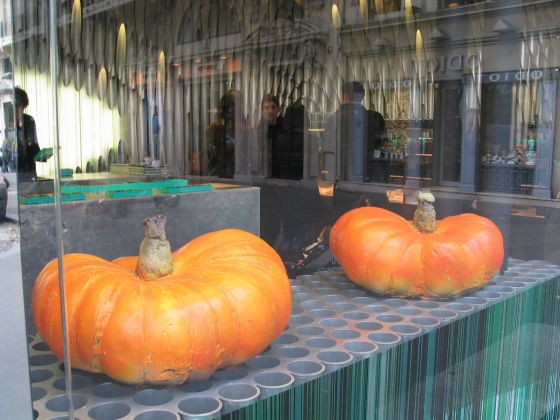
Every year, right around Halloween, Paris hosts the Salon du Chocolat. It's a four day extravaganza of the best chocolate makers scoured and gathered from across the globe.
For a city who, technically, doesn't really celebrate Halloween, the Salon du Chocolat makes up for it in spades, or, rather in chocolate... and all forms of choco treats all of which are edible and some of which are even wearable (see the photos snapped from the choco-couture runway show, a repeat signature event at the Salon).
Some photos from Halloween weekend in Paris and the Salon du Chocolat. Yes, the PUMPKINS ARE PURE CHOCOLATE!!!! Taken at the shop window on Place Madeleine.
©All photos Paige Donner 2013.
@LocalFoodWine
Follow us On Tumblr * Follow Us On Twitter * Like Us On Facebook
Saturday, October 19, 2013
Limoux, Family Guinot and A Brief History of Bubbly
« Do bubbles have a flavor ? Better to ask whether angels are male or female ? »
- Pierre Casamayor, L'Ecole de Degustation
by Paige Donner
The historical regions in France that have produced effervescent wines for several centuries are not limited to Champagne. Several regions pre-date that famous appellation's « discovery » of bubbly by a full century – notably Limoux, in the south of France, just north of Carcassonne and Narbonne. The other two historical regions of bubbly are Die and Gaillac, both also southerly.
For our purposes here, I will concentrate on the appellation of Limoux and use for illustration the illustrious Maison Guinot, whose sparkling wine took home the gold medal at the Exposition Universelle de Paris in 1889 during the inauguration of the Eiffel Tower.
Historical Background
It was in 1531 at the Abbey of St. Hilaire where the Mauzac grape was cultivated and first used to make a sparkling wine, known still today as Blanquette de Limoux. That was a full century before the dawn of champagne when the northerly region was still producing « still wines » from their Pinot Noir. Hence the Blanquette de Limoux carries the distinction of the « oldest Brut in the world » and its characteristic ripe apple notes, a gift of the Mauzac grape, make it instantly recognizable even when it is blended, as it is today, with poroportioned quantities of Chenin or Chardonnay.
Building on top of their 19c. success, the Maison Guinot responded to Tsar Nicolas II of Russia's interest in their wines by producing for him the very first Crémant de Limoux in 1913 : L'Imperial Guinot. You can find this cuvée still referenced today in Parker's guide to French wines and also in the Guide Hachette. The main difference between the Blanquette de Limoux and the Crémant de Limoux is, of course, the variety of grapes used for the blending. Crémant uses Chenin and Chardonnay today. Though Chardonnay was only authorized into AOC Limoux in '92. Blanquette uses Mauzac primarily though most houses today blend with either of the other two varieties, Chenin or Chardonnay. It's good to remember, as well, that champagne, at the turn of the last century, would have resembled something more like a Prosecco. Back then the bubbly, which was not so famous at that time, was blended for a palate seeking sweeter tastes. It's also worth noting that today's Loire Valley sparkling wines are often produced from the Chenin Blanc grape.
Limoux Terroir
So what is particular about this south of France terroir surrounding Limoux and the St. Hilaire Abbey that allows for superlative cultivation of not only the Mauzac and Chenin grapes, but also some of the country's best Chardonnay as well ? For this I will lean heavily on Pierre Casamayor, the French wine expert, author and professor at the University of Toulouse, to explain the local terroir, paraphrased from a presentation given by him.
Limoux has four distinct terroirs. Situated between the Atlantic and the Mediterranean, the appellation's altitude and soils vary throughout. Winds can blow either easterly or westerly depending on the weather patterns.
Mediterranean Terroir
These are the villages of St. Hilaire, Villebazy, Rouffiac, Pomas…The orientation is East/North-East. Altitudes average between 100m-200m and the Atlantic is what influences here, notably « le marin »which is an easterly wind. Very low rainfall, about 680mm per year. Here olive trees and green oaks share the vineyards' landscape. The grapes the vines yield are lower in acidity and show a quick and early ripening. The Chardonnays here are warmer and show little resemblance to their northern cousins.
Autan Terroir
Warm and dry are the watchwords for this area immediately surrounding the town of Limoux, in the lower part of the Aude Valley. Villages here are Rouffiac-d'Aude, Cépie, Alet-les-Bains and are somewhat protected from the winds at their 100-250m altitude. This area gets the lowest rainfall of all with only about 600mm per year.
The wines here appeal to a palate « a bit more delicate than the Mediterranean terroir ». Notes you'll find evident are tilleul and verveine, the Chards have vivacity. On the nose the wines offer scents of citrus, grapefruit, white flowers, jasmine, « lys » and spices.
Oceanic Terroir
These western villages of Loupia, Villelongue-d'Aube, Gaja-et-Villedieu and Pauligne are influenced by the Westerly winds and by the Atlantic weather patterns meaning rain and moisture. Rainfall is about 750mm per year with elevation at 200-300 m. No olives here just the green oaks. The grapes respond with a higher acidity, longer maturation.
The bouquet of these wines offer scents like cardamon, mineral, safran (spices), wild vanilla. The palate is harmonious, elegant, taut ; a good balance between power and vivacity/ freshness. A good home for the chards :« These Chardonnays can rival the best of them. »
Terroir of the Upper Valley
Roquetaillade, Bouriege, Festes and St. Andre are at the upper valley's 250 – 420 m elevations. Rainfall is the heaviest at 850mm per year on average. Temperatures are lower than down below and some of the local vintners describe this region as the « Burgundy of the South ». Characteristic of that nickname, you find microclimates here. Westerly winds are fresher and come later in Spring ; in the Fall they are cold and short. This is a terroir marked by the vintage year. The slower maturation of the raisins means that the flavors and « aromatic finesse » can develop and ripen slowly. Up here, not even green oaks grow.
The bouquet of these wines is fine and delicate and you can often detect a dominant floral-acacia note, even chevrefeuille, exotic fruits, light leather, tabacco. Palate appeals to tastes of austere elegance, « like muscles with no extra fat ». They often leave the taster with a bright finish and the desire to cellar for 2-5 years.
Harvest 2013 at Maison Guinot
Harvest this year, all done by hand as is the custom of the house, began on September 27th for the Mauzac. It usually lasts about 3 weeks according to Michel Guinot, who also confided that the Chardonnay harvest this year yielded « good quality, good aromatics, good acidity » when they harvested at 12-12.5%. Their Chenin Blanc came in at 11% alcohol and their Mauzacs at 10.5% at the beginning then 11.5% by the end of harvest.
The Maison Guinot has preserved that delicate balance between observing tradition and implementing modern adjustments. For example, they do their own blending and are their own « œnologues », Michel today and his father and grandfather before him. However the pressoir they use is automatic, the Wilmes, only one of two in France, the other being used by the house of Moët & Chandon. They turn 30K bottles by hand every day, using the now-established méthode Clicquot, or the riddling method first discovered by Madame « Veuve » Ponsardin Clicquot. For disgorgement they employ a process that can be considered unique these days, in that they do not freeze the neck of the bottle in order to dispel the accumulated sediment during the second fermentation ; Rather they use simply the built-up pressure of the carbonic gas to achieve the same results for their 180,000 bottle annual production.
Food Pairings
As we approach holiday season and colder weather in many parts of the globe, it will be a good and right thing to treat your palate to both a Blanquette de Limoux, its ripe apple flavors pairing so well with an oven-roasted turkey or chicken filled with a bacon-mushroom-chestnut stuffing. And for a fish or crestacean meal, as well as a citrus meringue tart or fruit-accented dessert, a Crémant de Limoux is quite nice.
@LocalFoodWine
Follow us On Tumblr * Follow Us On Twitter * Like Us On Facebook
Tuesday, October 15, 2013
Le Balm And Brooklyn Diner
re-published from Bonjour Paris
Le Balm and Le Brooklyn Diner
By Paige Donner

Le Balm. An unusual name for a Parisian restaurant you might think. However, as soon as you step inside this elegant new establishment in the shadows of the Ministry of Culture on rue de Valois, and are enveloped by the soothing vibes permeating the place, you sort of sigh and say to the gracious hostess, "Where might I be seated, please?"
 From outside, the design-rich interior first appears as if it could be a bit stiff with its generous use of white with bright spring green accents, full-size wall photos by Marc Lagrange and chairs designed by celebrated designer Jean-Marie Massaud. But once inside, whether it's for the lunchtime steal of a deal of appetizer + main for 29 Euros or appetizer + main + gourmet cafe (that's coffee served with little cakes and sweets) for 35 Euros, or in the evening for dinner service, the cosy warmth of le Balm overtakes you and serves to whet your appetite. In fact, it's a point that deserves even further punctuation as many big-city establishments serve outstanding food but skimp on tactile atmosphere. I find atmosphere - and vibes - imperatively important for pleasant conversation, ease of digestion, and quite simply put, overall enjoyable dining. Le Balm's got it all.
From outside, the design-rich interior first appears as if it could be a bit stiff with its generous use of white with bright spring green accents, full-size wall photos by Marc Lagrange and chairs designed by celebrated designer Jean-Marie Massaud. But once inside, whether it's for the lunchtime steal of a deal of appetizer + main for 29 Euros or appetizer + main + gourmet cafe (that's coffee served with little cakes and sweets) for 35 Euros, or in the evening for dinner service, the cosy warmth of le Balm overtakes you and serves to whet your appetite. In fact, it's a point that deserves even further punctuation as many big-city establishments serve outstanding food but skimp on tactile atmosphere. I find atmosphere - and vibes - imperatively important for pleasant conversation, ease of digestion, and quite simply put, overall enjoyable dining. Le Balm's got it all.
Reservations Recommended. Lunch M-F Noon - 3pm; Dinner Monday - Saturday 7pm - Midnight.
Le Balm 6 rue de Valois Paris 75001 balm.fr 01 42 60 38 81
Brooklyn Diner
 In the exciting scene that is the never-ending evolution of Paris dining, another small team of young Frenchmen has opened the doors to their first Burger joint in Paris. Like other youthful adventurers, the team went for their walkabouts around the globe and decided to bring back to Paris a NYC diner that outdoes the best of the burgers in the west.
In the exciting scene that is the never-ending evolution of Paris dining, another small team of young Frenchmen has opened the doors to their first Burger joint in Paris. Like other youthful adventurers, the team went for their walkabouts around the globe and decided to bring back to Paris a NYC diner that outdoes the best of the burgers in the west.
For Yann Bourgeois, Alexandre Maloubier and Hadrien Birembaux this is their second restaurant following Gatsby. This time they decided to give Parisians a real taste of what an authentic diner is like, the kind you might find around Mid-town Manhattan or even in Brooklyn.
 Things that make you feel like you're back home: Huge portions. I'm not kidding. We each ordered a salad and a burger and it was about two dishes too much. The salads come in dinner plate size bowls and my Caesar Salad which should be called a Chicken Caesar Salad had so much chicken in it I had plenty to share with my little dog. She already keeps asking me, When can we go back? My lunchmate ordered the XXL Burger. At 18Euros I was thinking it better be XXL. He's a big guy - well over 6 foot - and even he had a hard time downing all of it after chomping down his tuna salad. "One of the best burgers I've ever had," was his true blue American takeaway. They have fresh-baked bagel sandwiches too - Lox, Turkey, Pastrami, B.L.T.
Things that make you feel like you're back home: Huge portions. I'm not kidding. We each ordered a salad and a burger and it was about two dishes too much. The salads come in dinner plate size bowls and my Caesar Salad which should be called a Chicken Caesar Salad had so much chicken in it I had plenty to share with my little dog. She already keeps asking me, When can we go back? My lunchmate ordered the XXL Burger. At 18Euros I was thinking it better be XXL. He's a big guy - well over 6 foot - and even he had a hard time downing all of it after chomping down his tuna salad. "One of the best burgers I've ever had," was his true blue American takeaway. They have fresh-baked bagel sandwiches too - Lox, Turkey, Pastrami, B.L.T.
Main courses 5Euro (NYC hot dog with relish) to 18Euro. Salads 12Euro - 14Euro. Serving Breakfast, Lunch and Dinner.
12, rue du Champ de Mars Paris 75007 (M. Ecole Militaire) Open 7/7 8 a.m. to 2 a.m.
#LocalFoodAndWine
Follow us On Tumblr * Follow Us On Twitter * Like Us On Facebook
♥Chérie Du VinFriday, September 20, 2013
Napa Valley Film Festival - 3rd Annual
Napa, California, (September 18, 2013) – Napa Valley Film Festival (NVFF) Co-Founders and Directors Brenda and Marc Lhormer are proud to announce several of the festival's star-studded headlining films, as well as the first set of honorees to be feted at the Celebrity Tribute Program, hosted by Access Hollywood's Billy Bush.
NVFF returns in full force with a five-day Festival
spanning Napa Valley's four postcard-perfect towns
of Napa, Yountville, St. Helena and Calistoga,
November 13 – 17.
Two-time Academy Award®–winner Emma Thompson and fellow double Oscar®-winner Tom Hanks will "wow" audiences with a Gala Presentation, on Thursday, November 14, of Saving Mr. Banks, directed by John Lee Hancock and inspired by the extraordinary, untold backstory of the long road Disney's classic Mary Poppins took to make it to the big screen. The terrific supporting cast includes Colin Farrell, Jason Schwartzman, Bradley Whitford, B.J. Novak, Rachel Griffith, Kathy Baker and Paul Giamatti. Courtesy of Walt Disney Studios.
More Films and Festivities HERE
The ultimate celebration of film, food and wine, NVFF, November 13-17, lights up the picturesque towns of Napa, Yountville, St. Helena and Calistoga at the most colorful time of year. NVFF features over 100 new independent films and studio sneak previews screening in 12 beautiful venues throughout the 4 walkable villages, as 300 visiting filmmakers interact with audiences at screenings and intimate events. Attendees enjoy film panels & culinary demonstrations, wine tasting pavilions, the spectacular Festival Gala, Celebrity Tributes, Awards Ceremony, and an array of parties, VIP receptions and winemaker dinners and more. For information or to buy passes, visit NapaValleyFilmFest.org
#LocalFoodAndWine
Follow us On Tumblr * Follow Us On Twitter * Like Us On Facebook
♥Chérie Du VinTuesday, August 13, 2013
Breaking Bad. Pol Roger
French Transl. "L'Impuissance"
The scene plays out like this: Lead character "Walter White," played by Emmy-nominated Bryan Cranston, comes home to celebrate the moment of regaining his "health" with his estranged but faithful and long-suffering wife.



